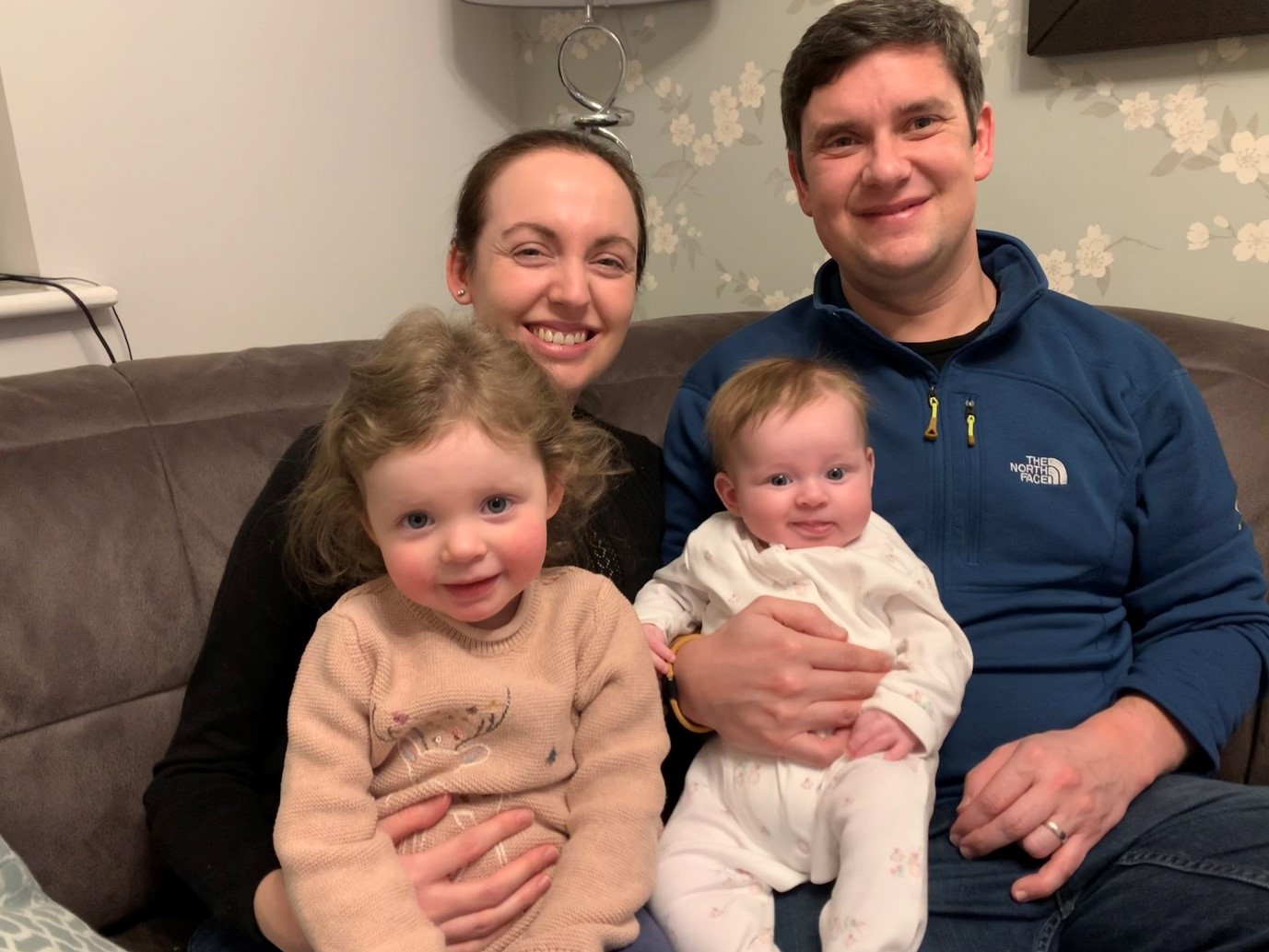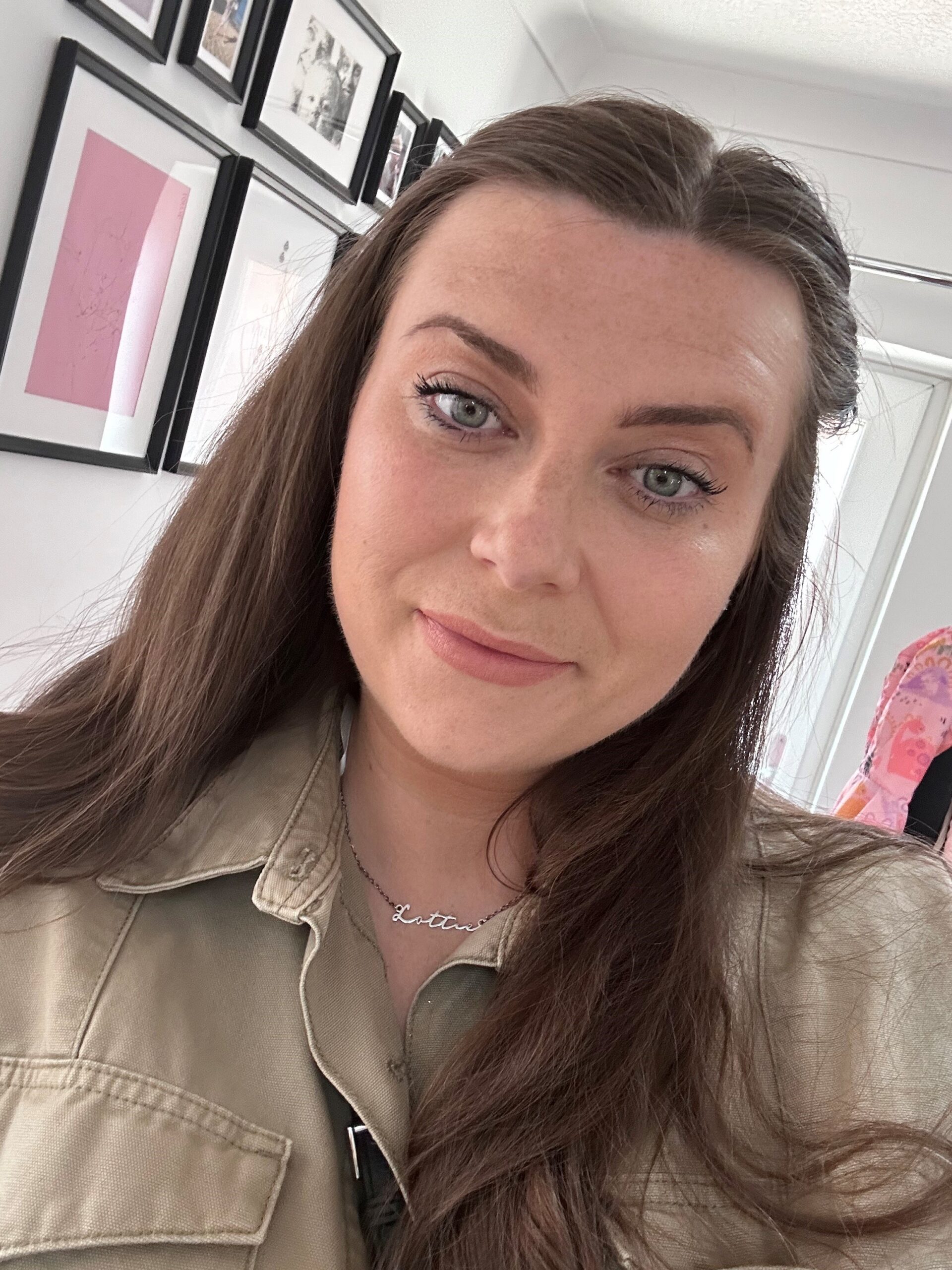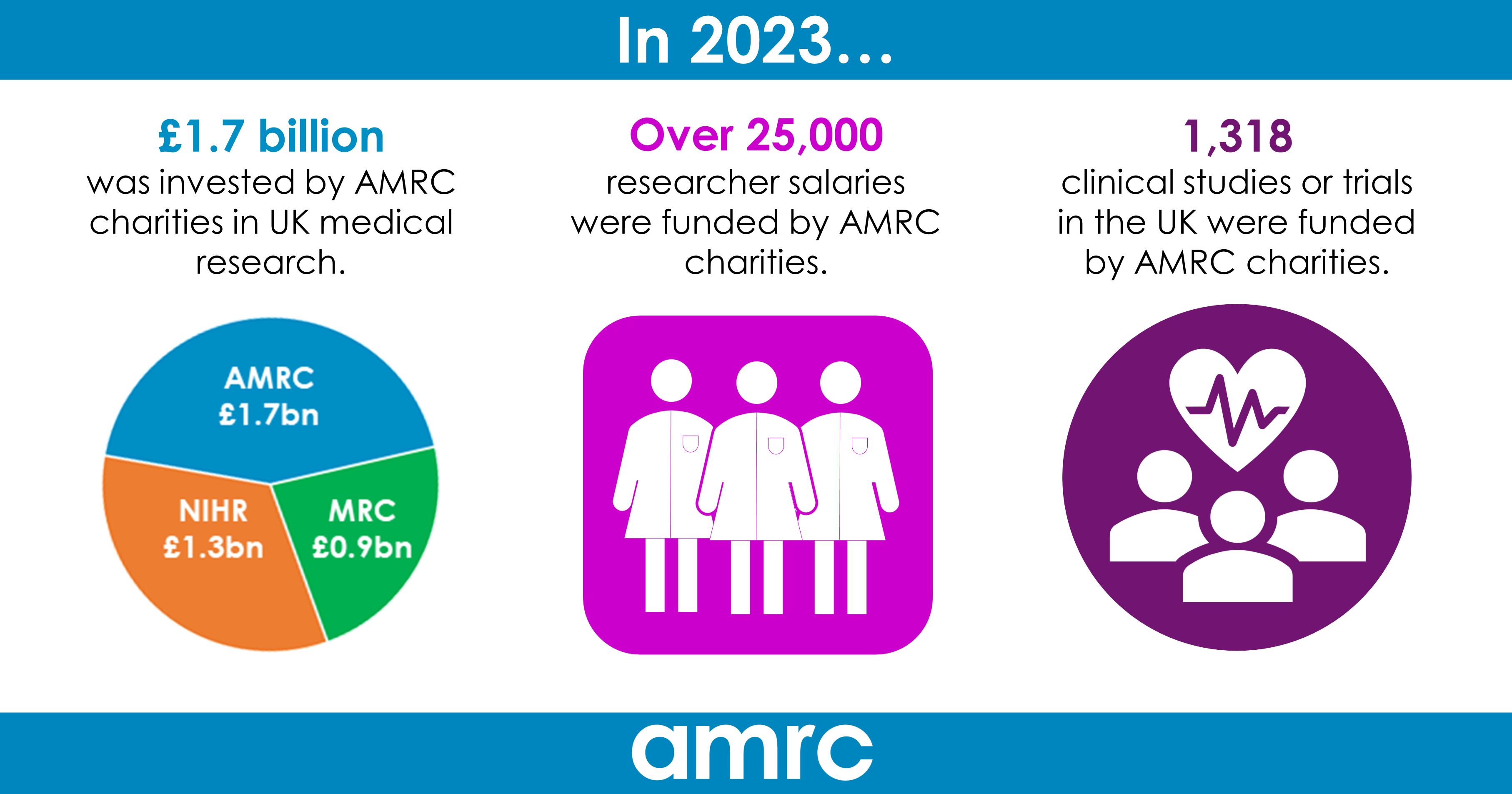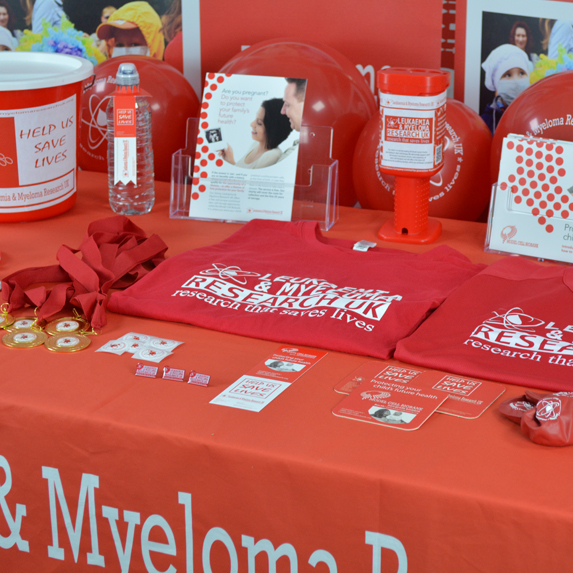
The moment baby Alice Newborough was born, parents Sam and Craig had a phlebotomist on hand to harvest potentially lifesaving stem cells from her umbilical cord, which were frozen and banked as a charity-funded health insurance for the little girl and her older sister.
Just weeks before Alice’s birth, her sister Lara, 3, was given her final dose of chemotherapy after two long, hard years of treatment for leukaemia, which was diagnosed when she was just a year old.
During her pregnancy with Alice, Sam discovered LMRUK’s Model Cell Biobank service and contacted the charity to find out about the potential ways she could protect her daughters in the future by using stem cell treatments.
“My dad came across the charity’s website and sent me a link, which is how I first learnt about cord blood banking. I started reading up about their Model Cell Biobank service, which enables parents to store their baby’s umbilical cord blood stem cells for future use, and found it really interesting”, said Sam.
The Model Cell Biobank is the first fully-funded service for eligible families, offering parents the opportunity to store their baby’s cord blood for 25 years in case the child, or another member of the family, needs them in the future.
“Since Lara’s chemotherapy ended in September, her consultant has been optimistic that the cancer won’t return. However, if Lara was to relapse, we want to ensure that we have done everything possible to give her the best treatment options available, which Lara’s consultant has advised us could potentially include a stem cell transplant if a suitable match could be found.
“The team at LMRUK were so helpful and knowledgeable – they talked me through the whole process and advised me that as a sibling, there was a 25% chance that Alice’s stem cells would be a match for Lara’s. Craig and I read through all the information on the LMRUK website and decided to apply.
“Due to Lara’s history, our application was approved and we were awarded the charity’s fully-funded offering which meant we could store Alice’s umbilical cord blood stem cells for up to 25 years. We were so grateful to the charity for their support and advice. They made the process straightforward from start to finish.
“After our application was accepted by LMRUK, we notified our midwife that we’d like umbilical cord stem cell harvesting included in our birth plan (which she was familiar with), and we were sent a collection kit from the charity with more detailed information. When I did go into labour, my husband was tasked with remembering to bring the collection kit with us and calling the phlebotomist to meet us at the hospital.
“Due to Covid-19 and the tight restrictions in place, we were concerned that a phlebotomist might not be allowed in, but the hospital set up a separate room for the phlebotomist to use so once I’d given birth, the cord blood stem cells could still be collected safely.
“The process went really smoothly – it had no impact on the birth or bonding experience, and it happened out of sight so we could still have our privacy. It caused no harm or stress to either Alice or me.
“We were able to take Alice home just a few hours after the birth and we took the collection kit, now containing the cord blood, home with us. Craig contacted the courier who arrived later the same day to pick up the collection kit from our home and take it off to Biovault to be processed. A few days later we received a certificate to say the processing and storage of the stem cells had been successful, along with reference details should the stem cells ever need to be retrieved.
“Before my dad found the link to LMRUK’s Model Cell Biobank, I’d never heard of cord blood stem cell storage, or known of anyone who had been through the process, but I’d absolutely recommend it.
“Although it is still a worrying time for us, it helps us to know that, thanks to the help of LMRUK, we have this extra ‘safety net’ to call upon should Lara’s leukaemia ever return. We’d recommend expectant parents to look into this as an option to protect their family and future generations.
“We’ve been kept very busy since bringing Alice home but have been really enjoying the new dynamics of now being a family of four. Alice is a very happy and content baby (although she doesn’t seem to need much sleep!). Lara is thriving as a big sister, she’s happy, healthy and full of kisses and cuddles for Alice”, added Sam.
Dr Joanna Tilley, Operations Director for LMRUK said: “Stem cell transplants are frequently being used to treat people affected by blood cancer instead of relying on bone marrow transplants. But in light of this, storing umbilical cord blood stem cells is still not widely spoken about.
“The benefits of using stem cells to fight blood cancer and other diseases is remarkable – they are currently being used to treat over 80 life-threatening diseases, including many blood cancers such as leukaemia.
“There is still a lot of uncertainty surrounding the process, but it causes no harm or risk to the baby or mother and it doesn’t interfere with the birthing process. We aim to help educate expectant parents on the options available to them to help protect the next generation.
“We’re so pleased to have supported Sam and her wonderful family through the process of storing Alice’s umbilical cord blood stem cells for future use, should it be needed, and we wish them all the very best for the future.
“If anyone is interested in learning more about storing cord blood stem cells using our Model Cell Biobank service, please get in touch to speak with our team today”.
For more information on LMRUK’s part-funded and fully-funded Model Cell Biobank service, visit: https://lmruk.org/model-cell-biobank-service/
Picture: Sam and Craig Newborough with their daughters, Lara and Alice.







